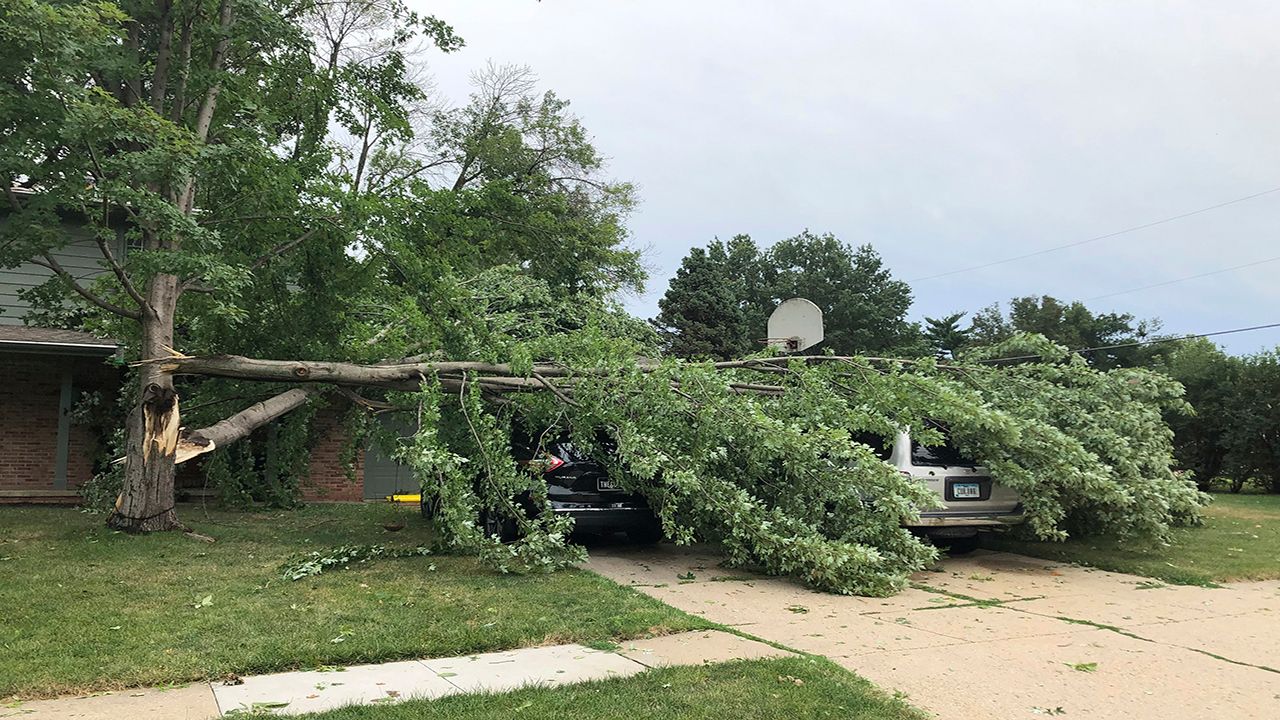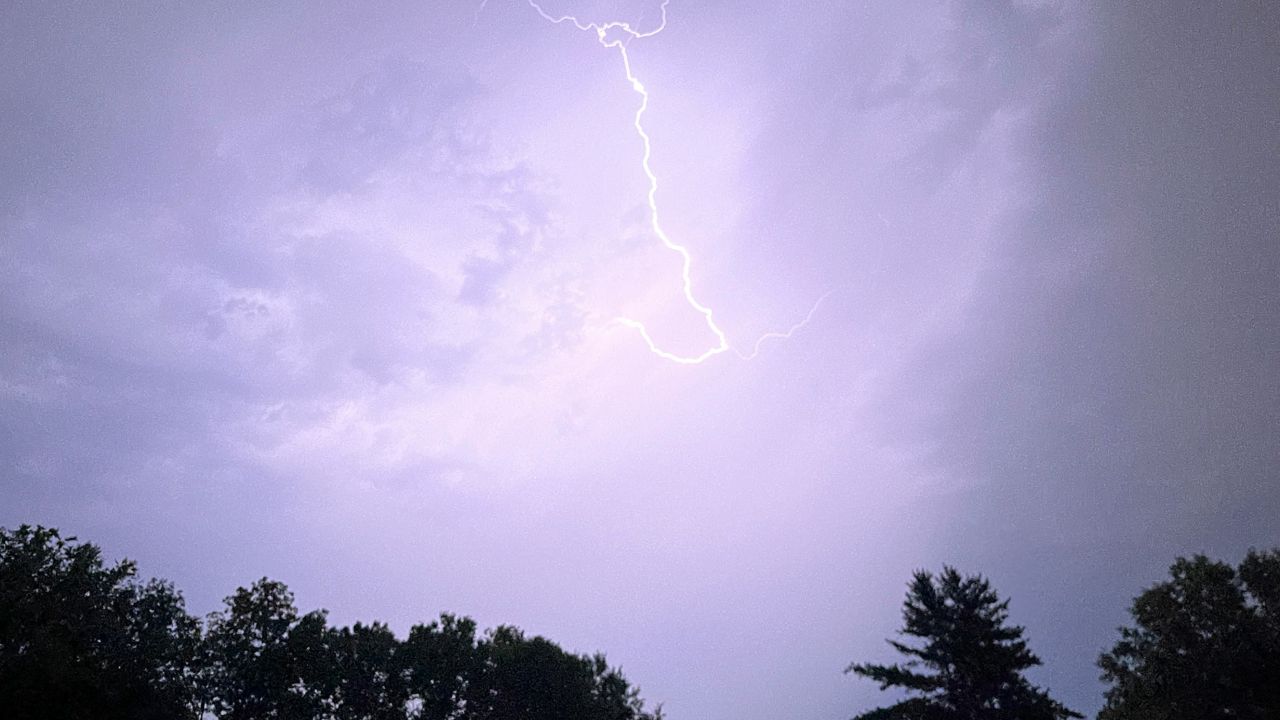A powerful and unique line of thunderstorms ripped through parts of the Midwest one decade ago today.
The storm complex, known as a derecho, left widespread damage from downed trees and powerlines that left thousands without power across the Ohio Valley on June 29, 2012.
In late June of 2012, a derecho fired up in northern Indiana then raced through Ohio and West Virginia, bringing hurricane-force winds.
Before the storms reached Ohio, there was record-setting heat throughout the state. Highs reached the 90s with high humidity, so plenty of moisture in the air helped intensify the storms.
The storms began near Chicago and quickly intensified as they moved into northern Ohio, with wind gusts already over 90 miles per hour.
As the derecho pushed into the Ohio valley, the storm complex produced widespread damage as the line of storms ‘bowed’ out.
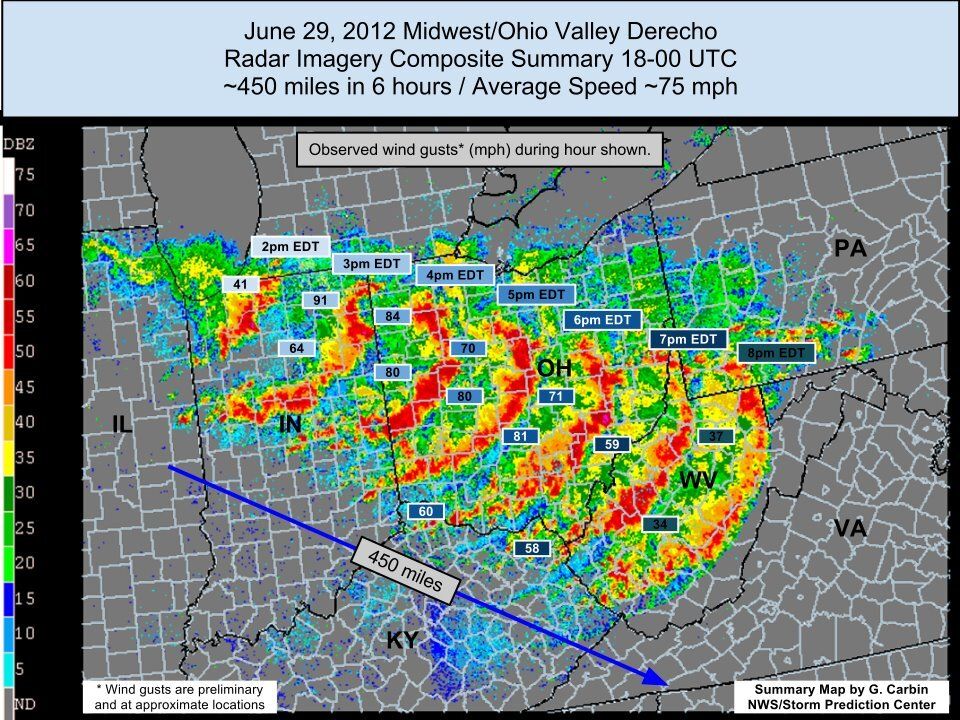
It was a fast-moving storm, according to the National Weather Service. The derecho entered NW Ohio around 3-4 p.m. A few hours later, it exited SE Ohio by 7 p.m. with an average forward speed of at least 60 mph.
The Ohio Valley/mid-Atlantic Derecho greatly impacted the region. It killed 22 people, and five million people lost power. In total, the storm traveled nearly 700 miles.
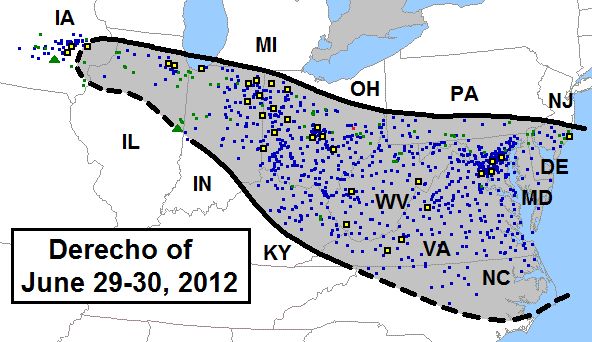
This event is classified as a once-in-60-years event, and it was costly. According to the National Centers for Environmental Information, the damage cost $2.9 billion from Illinois to Virginia.

Derecho is a Spanish word that means 'straight.'
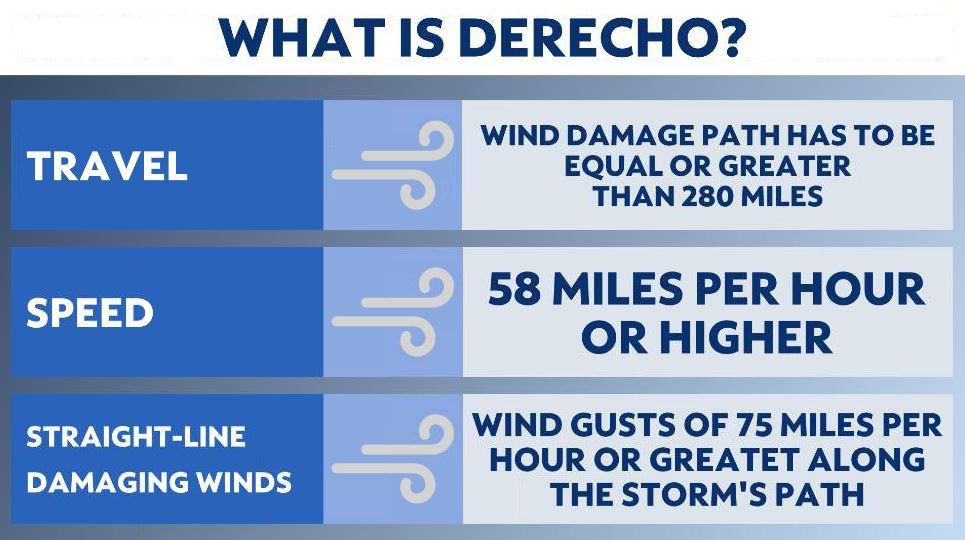
In the meteorology world, the term describes a specific storm complex. Derechos are massive wind events with long-lived, violent straight-line convective winds.
The storm complex travels hundreds of miles. To be classified as a derecho, the line of storms must travel at least 240 miles and move at speeds of at least 58 mph.
Usually, the wind gusts produced from the massive wind storm exceed 50 to 80 miles per hour, and in some cases, over 100 miles per hour.
Derechos are not very common, but they can cause more widespread damage than a tornado because of the storm's size and how far it travels.
Click here to learn more about derechos and how they form!





